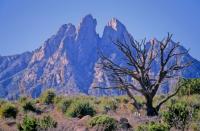Federal Protection of Wilderness Study Areas Reinstated
 Black River Recreation Area, New Mexico. Photo: BLM
Black River Recreation Area, New Mexico. Photo: BLM
Interior Secretary Ken Salazar today restored a policy allowing the Bureau of Land Management (BLM), which he oversees, to recommend undeveloped lands for federal protection under The Wilderness Act of 1964.
Millions of acres of land could eventually be designated as “Wilderness Study Areas” as a result of Salazar’s order. While only Congress can create new wilderness areas, the order re-authorizes the BLM to protect areas from development until Congress considers whether or not to create a new wilderness area.
The Bush administration introduced the “No More Wilderness policy” in 2003 when it removed the BLM’s authority to designate wilderness areas and afford them protection from excessive development. As a result, millions of acres of public lands that qualified for wilderness status were leased to oil and gas companies. Currently, oil and gas companies hold leases on over 45 million acres of public lands in the western United States, with about 13 million acres in development.
Salazar’s order will restore administrative protection to more than 6 million acres of land in Utah, 650,000 acres in Colorado, 5.5 million acres in Arizona, and 2 million acres in New Mexico, according to the Southern Utah Wilderness Alliance.
"Americans love the wild places where they hunt, fish, hike, and get away from it all, and they expect these lands to be protected wisely on their behalf," said Salazar in a press release. "This policy ensures that the lands of the American public are protected for current and future generations to come."
Of course, there were detractors.
Speaking up for industry was Sen. Orrin Hatch, R-Utah, who said in is own fiery press statement that restoring the wilderness protection policy was “extremist” and "a brazen attempt to kowtow to radical environmentalist groups by locking up more public lands in Utah and other states."
Hatch, the Senate's most senior Republican, is seeking re-election in 2012. and no doubt major campaign contributions from oil and gas lobbyists. Between 2005 and 2010 he was the Senate's top recipient of campaign funds from the pharmaceuticals and health products industry.



 del.icio.us
del.icio.us Digg
Digg












Post your comment